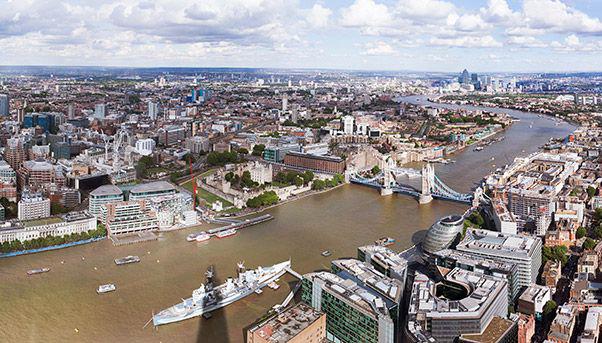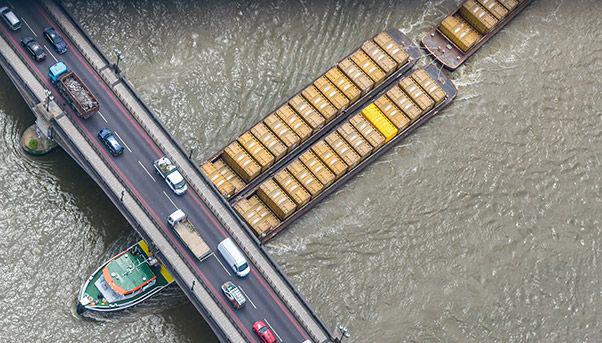
As London keeps getting taller with the rise of new skyscrapers, tunnel-boring machines are busy digging their way underneath their foundations. Instead of a new subway line, they are working on a water infrastructure project that in terms of investment and impact is being called the most ambitious in the city’s last 150 years.
The Thames Tideway Scheme is a 25-kilometer-long tunnel with a diameter of seven meters that will run under the bed of the Thames and manage sewage and storm water run-off to avoid damaging spillover into the river’s waters, significantly reducing pollution. It will virtually be an underground highway, bringing together wastewater from 34 sewer pipes throughout the city. Inspired by the Cloaca Massima sewer of Ancient Rome, the project is estimated to cost €4.7 billion (£4.2 billion, of which £3 billion financed by the Tideway consortium of investors, and £1.2 billion by water provider Thames Water Utilities Ltd). It is to take at least eight years to build, from 2016 to no earlier than 2023.
A new tunnel in 150 years
The structure of the London sewer system is based on the network of pipelines designed by Sir Joseph Bazalgette and built between 1859 and 1865. His was a visionary project for its era because it consisted of a 1,100-mile-long street sewer network to prevent the discharge of wastewater into the Thames, which was already heavily polluted.
However, the population of London has since increased from two million to nine million, and the sewage system has started to dump waters into the Thames just like it did in the 19th century. According to a recent investigation by The Guardian newspaper, the equivalent of 300 Olympic swimming pools of water is dumped into the river each week. Not only that: according to calculations by Thames Water, the water management utility, the river overflowed 50 times in the last year.
These figures show just how important and urgent this project is to protect the Thames from pollution and provide London with a modern water management system.

A project to renew the city
The goal of the Thames Tideway Scheme is to collect sewage and rainwater and transport it to a treatment plant far away. The tunnel’s 25-kilometer-long journey begins at Acton, West London. By exploiting gravity (the tunnel is built on a slight slope from 30 to 66 meters deep), it transfers the polluted waters to treatment plants in the east of the city.
The project’s vast size means it must be constructed in sections. The first was inaugurated on January 28, 2016 and runs between East Ham and Stratford for a length of 6.9 kilometers. This section alone can transport 15 million tons of water every year. Work is underway to complete the rest of the tunnel, which, when finished, will reduce the amount of wastewater discharged into the Thames by 95%.
An impact on the environment and on the economy
The primary impact of this huge infrastructure project is on the health of the ecosystem and the residents themselves.
A project worth over £4 billion brings with it positive effects on the economy and the development of the city, as well. Every year in London, between 49,000 and 62,000 homes are built, and their sanitation will be guaranteed by the new sewage system. In addition, the building site has already created 4,000 direct jobs, and another 5,000 indirect ones. The other sector that will benefit from the work will certainly be tourism, because of a cleaner river. More generally, it will be a boon to economic activities able to exploit the redevelopment of the river and its docks, since shipping will benefit from improved freight transport facilities.
To supply the Thames Tideway Scheme worksite alone, the goal is to convey 90% of the project materials on the Thames River waters, for a total of 4.2 million tons. Once the project is completed and the riverbanks are cleaner, it could help to develop water transport, thus reducing air pollution and traffic congestion on the city’s roads.
In general, according to the calculations of the UK Ministry of Economic Development, the entire project could guarantee a return for the British economy of £13 billion pounds (€14.5 billion).

